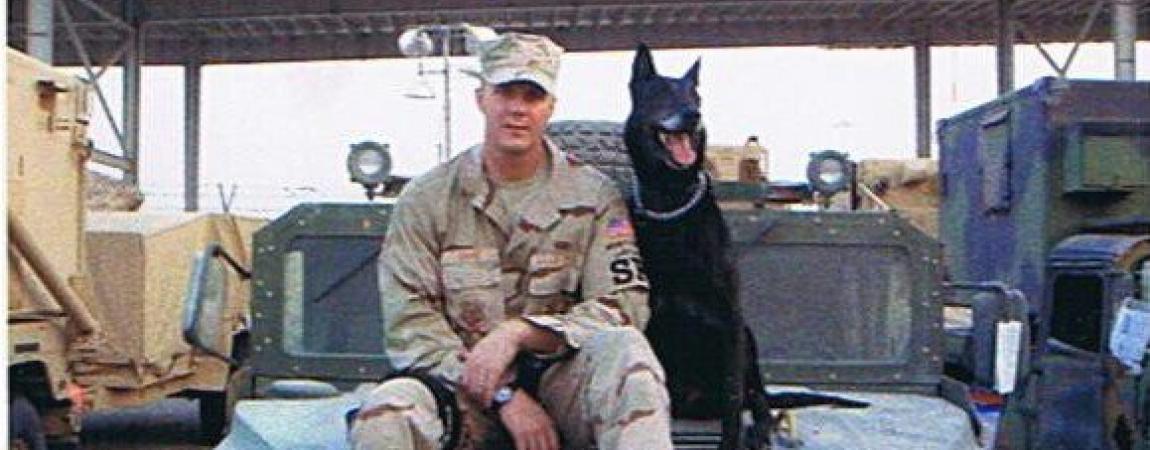Honoring Our Four-Legged Veterans on National K9 Veterans Day

PHOENIX, Ariz.- They say dog is man’s best friend, but when the connection between human and animal could mean the difference between life and death, some may argue that bond runs even deeper.
For Arizona Department of Veterans’ Services Outreach Program Manager Nick Drake, becoming a K9 handler fueled his desire to join the Air Force when he was 22. Throughout his decade-long career, Nick served alongside and trained more than half a dozen military K9s—spending seven of those years with his Czech Shepherd Spiky and his Dutch Shepherd Blacky.
“You have such a huge bond because it’s just you and the dog,” said Nick. “It is a completely different world in the military with the K9 and it was just so awesome having that bond that you build.”
Department of Defense (DOD) military working dogs have been used in the all branches of the military for nearly a century, helping protect service members and complete assignments overseas. While they were not officially recognized as a part of the DOD until 1942, K9s have been used in combat in every war in U.S. history. Today, the DOD has more than 1,600 military working dogs.
As an important member of the military, the working dogs are celebrated each year on March 13 for K9 Veterans Day-- the day that the Army first began training for its war dog program, called “K9 Corps.”
These K9s are trained under one of four specialties: sentry dogs to detect people and guard military bases; patrol dogs to detect snipers and ambushes; explosive detection to find bombs and other explosives; and casualty dogs to search for deceased individuals in obscure locations.
Dogs from every branch come from the 341st Training Squadron at Joint Base San Antonio-Lackland in Texas where they are bred into the U.S. Military through the DOD Working Dog Breeding Program. For the first six months, the new puppies live with foster families around San Antonio before entering a 90-day training program at Lackland to be taught to work in a military capacity. After that, they are evaluated to see if they can enter the Military Working Dog Training Program.
Once their training is complete, each dog is assigned a handler but can also rotate handlers throughout their career.
Like swapping stories with an old war buddy, Nick had plenty of tales of his deployments with his dogs—from flying cross country with the 80-lb Spiky in his lap to sniffing out bombs with the 10th Mountain Division.
He laughed as he retold the story of when he almost lost his dog Blacky at a Kuwait airport base when the aptly named dog ran off into the dark desert after a tennis ball and briefly disappeared. During his search, Nick feared the worst after hearing Blacky’s cries coming from a nearby abandoned underground bunker, but discovered the unharmed dog couldn’t jump back out because he refused to let go of the tennis ball.
Nick recounted the stories, all while looking at Spiky’s harness and a leash embroidered with the names of all his dogs hanging on the wall next to him. On the harness, Captain’s bars were sewed on, a reminder of Nick’s running joke about Captain Spiky.
While deployed in Baghdad, the Army service members that were also stationed at Nick and Spiky’s kennel shared the Army’s belief that all military K9s outrank their handlers, so one day, Nick affixed the Captain’s bars to Spiky’s harness declaring that he outranked every dog and person on the base.
But, just as important as the dogs’ drug or bomb sniffing skills, Nick remembered how important the K9s ended up being for the morale of other service members.
“You have people who have been away from home for months or longer and miss their dogs so just getting to see Spiky or Blacky, people were so excited, their whole demeanor changed,” Nick said. “Just his presence would help put a smile on their faces.”
Thank you to the military working dogs who served and sacrificed for our country.